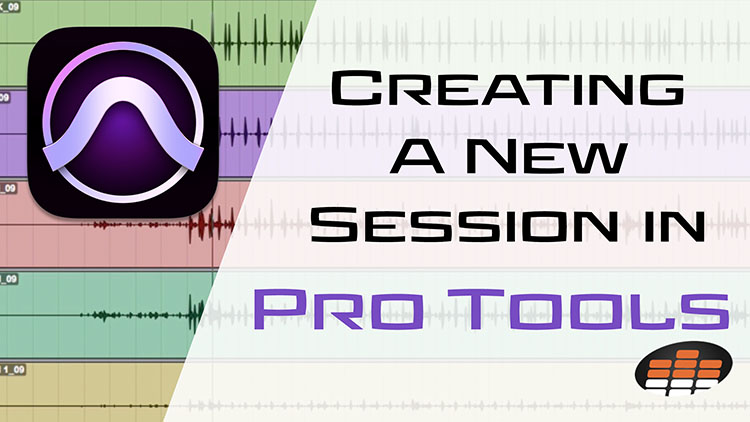Jon Connolly is the most sought-after Pro Tools instructor in the world.
Having been with Avid since the company first started out as DigiDesign in the early ‘90s, he quickly became their Product Specialist in Los Angeles, offering Pro Tools installations, training, and support to major studios like Warner Bros., Universal, Capitol, The Village, Record One, Westlake, and more.
Today, Jon is a Pro Tools Master Instructor for Avid, travelling the world and training Pro Tools users of all levels. He also teaches at the world-renowned Berklee College of Music. In this quick tip, he teaches us how to create a new session in Pro Tools using the appropriate sample rate and bit depth!
Making a New Pro Tools Session
When you launch Pro Tools, the first thing that comes up by default is the Dashboard. From the Dashboard you can create a new session or open a recently saved one. The very first thing you’ll want to do is name your project—every engineer develops his/her own naming conventions over time, but it should be something you can identify at any point later on.
- RELATED: How To Bounce Stems In Pro Tools
Next you’ll be able to select File Type, Sample Rate, Bit Depth, and I/O Settings. Pro Tools offers both WAV and AIFF formats as audio recording file types. They’re largely the same, though the default WAV format might get you a little bit more compatibility and is considered the industry standard.
Sample Rate
The default sample rate is 44.1 kHz with options all the way up to 192 kHz depending your hardware interface. The higher the sample rate, the better quality your recordings will be. However, the file size will be significantly greater, as well as the tax on system resources. Most music is done at 44.1 or 48 kHz. Almost all TV/film audio is done at 48 kHz.
As a general rule of thumb, your sample rate should be twice as high as the highest frequency you intend to record. As the human ear only goes up to 20 kHz in the most extreme cases, the default 44.1 kHz is quite adequate.
Bit Depth
Bit depth determines the dynamic range of your recording and is another factor contributing to the overall resolution of your recordings. There are 6 dB worth of headroom in each bit, so a bit depth of 24 offers 144 dB of dynamic range. 24-bit is standard.





